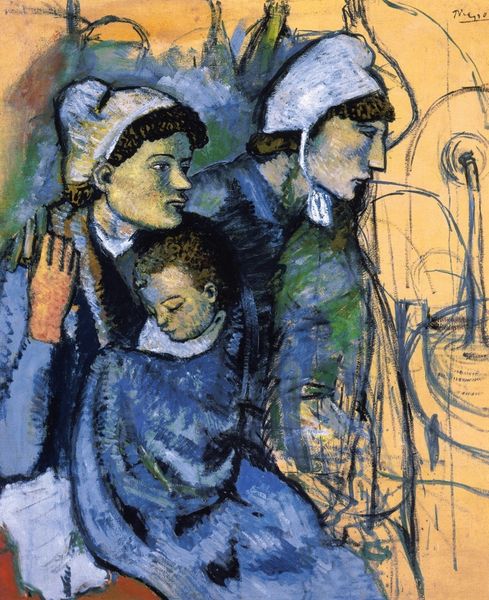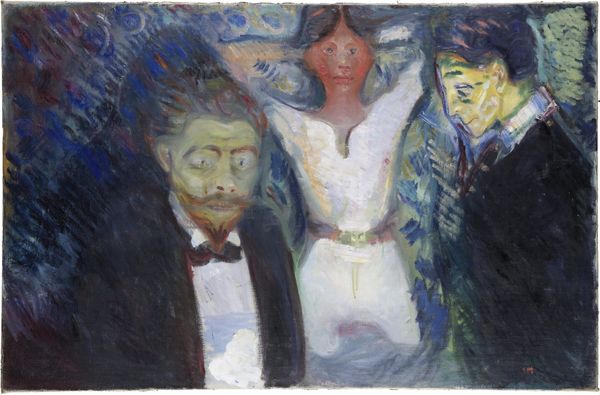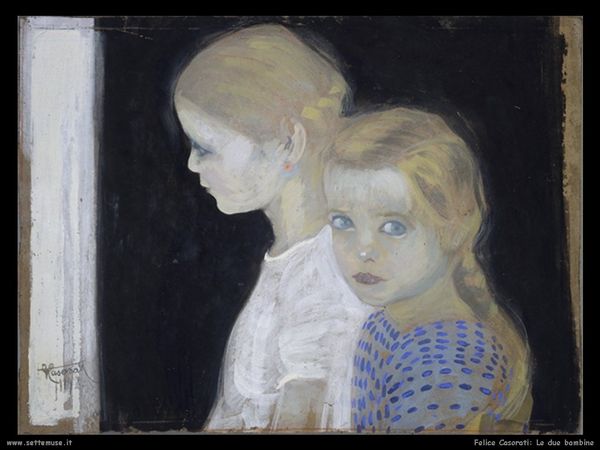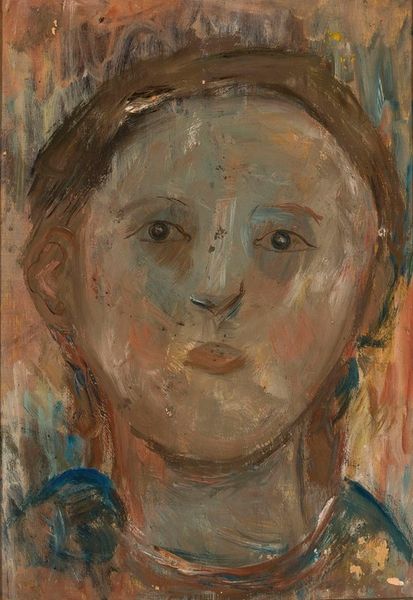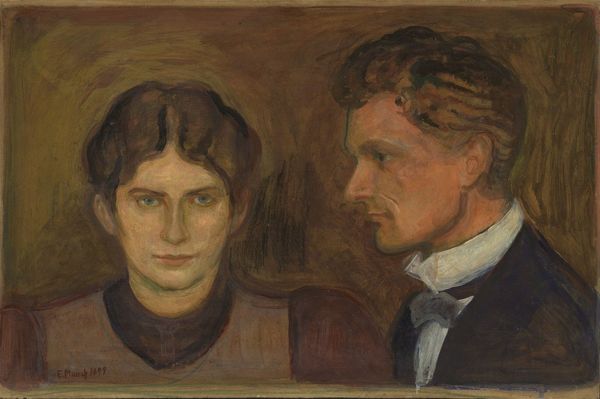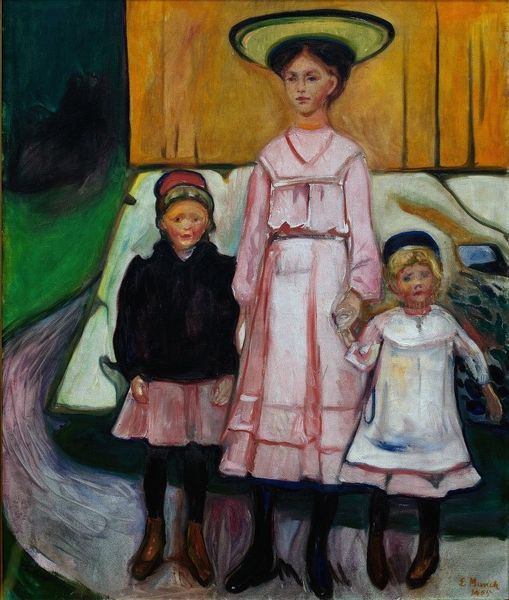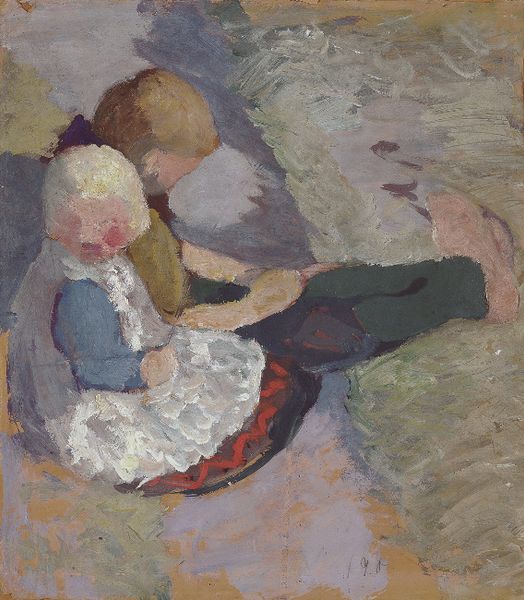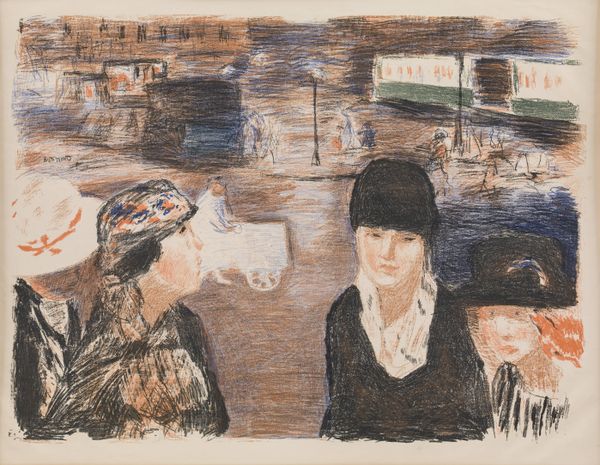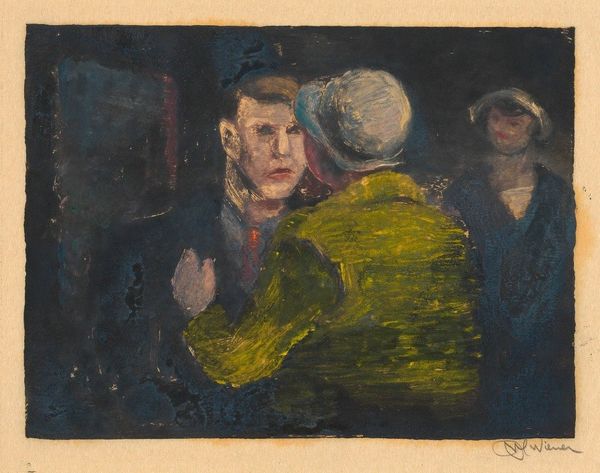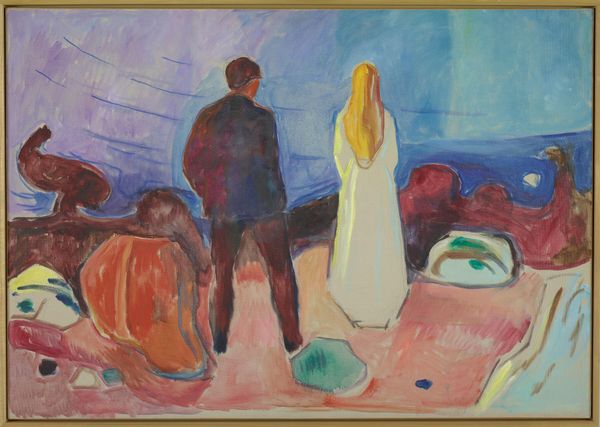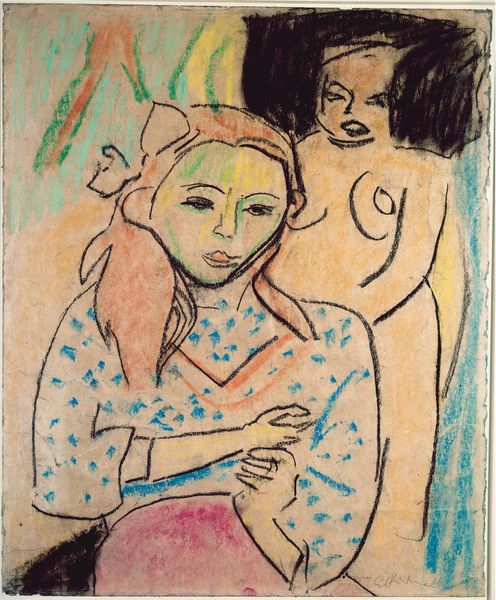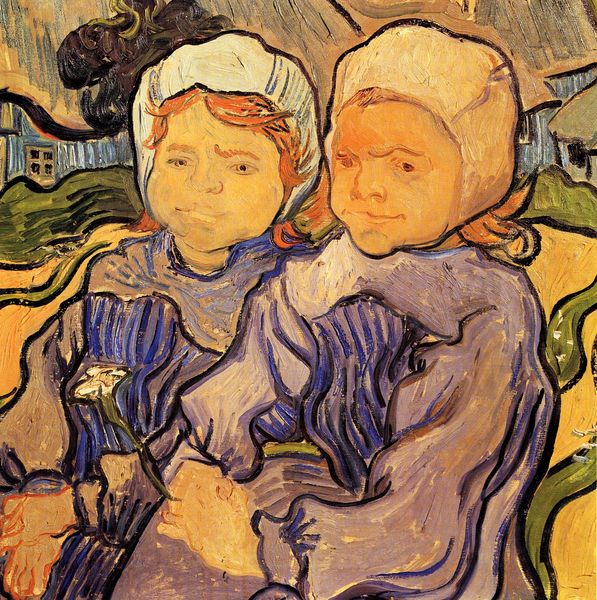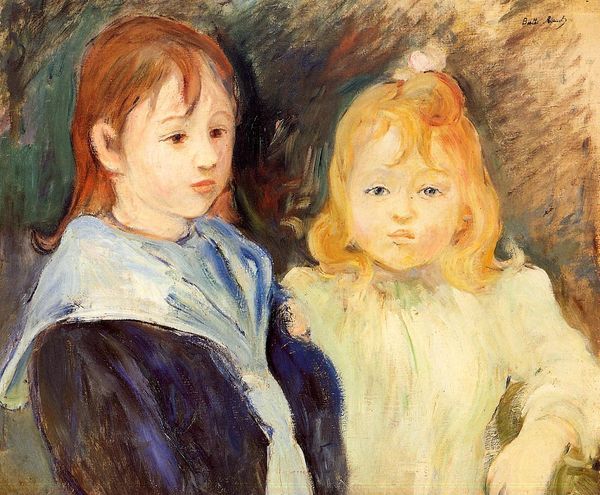
Dimensions: 48.5 x 66.5 cm
Copyright: Public Domain
Curator: This is Edvard Munch’s “Old Fisherman and his Daughter,” painted around 1902. I’m immediately struck by the bluntness of its form. Editor: They certainly aren’t idealized figures, are they? I sense a great weight, an unspoken burden shared by these two. The man’s face seems weathered by life. I’m guessing he’s staring at an uncertain future for his daughter, which wasn’t uncommon at the time. Curator: Yes, observe how the bold brushstrokes render the scene so expressively. It verges on abstraction, particularly in the background. Notice the color scheme: the somber blues and greens that envelop the subjects, reflecting, I think, Munch’s movement into Symbolism around the time he painted this piece. Editor: I'd go further and say that we have to address the historical dimensions of patriarchy in the fishing communities of that time. Her downward glance seems almost resigned; is she perhaps facing an arranged marriage to ensure survival, or burdened by responsibilities within a deeply gendered, hierarchical structure? Curator: While your reading is valuable, let's consider also the formal arrangement. The figures are close together, but remain separate entities within the picture plane. There's very little background activity. The attention is strictly upon the contrast and tensions embodied in the two figures and the colors. Editor: Still, can we disentangle their relationship, their individual psyches, from the context of societal expectations, from Munch’s anxieties surrounding women and the patriarchy that dominated social order? I argue no, because they can become almost like mannequins rather than humanized people! It’s what art demands: it wants both. Curator: Indeed. This seemingly simple portrait unlocks complex narratives. The rough paint application contrasts with a clear observation, but the lasting impression arises out of something ambiguous in the painting style itself. Editor: Absolutely. Ultimately, Munch invites us to engage with difficult conversations about family, responsibility, gender roles, and existential struggles within this very moving painted diptych.
Comments
stadelmuseum about 2 years ago
⋮
They are close together and yet solitary. Munch has portrayed the old fisherman and his daughter as disturbingly isolated. Nor do the figures establish eye contact with the viewer despite their placement at the front of the picture. Lost in thought and with a melancholy expression, they gaze into nothingness. The earnest face of the girl, framed by her light hair, looks if she has almost as much experience of life as her father with his weather-beaten features. The psychological penetration of the two figures gains a particular intensity from sectional character of the picture and its monochrome background.
Join the conversation
Join millions of artists and users on Artera today and experience the ultimate creative platform.
